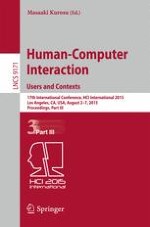go back to reference De Bolle, M., De Fruyt, F., McCrae, R.R., Lockenhoff, C.E., Costa, P.T., Aguilar-Vafaie, M.E., Ahn, C.K., Ahn, H.N., Alcalay, L., Allik, J., Avdeyeva, T.V., Bratko, D., Brunner-Sciarra, M., Cain, T.R., Chan, W., Chittcharat, N., Crawford, J.T., Fehr, R., Fickova, E., Gelfand, M.J., Graf, S., Gulgoz, S., Hrebickova, M., Jussim, L., Klinkosz, W., Knezevic, G., Leibovich de Figueroa, N., Lima, M.P., Martin, T.A., Marusic, I., Mastor, K.A., Nakazato, K., Nansubuga, F., Porrata, J., Puric, D., Realo, A., Reategui, N., Rolland, J.P., Schmidt, V., Sekowski, A., Shakespeare-Finch, J., Shimonaka, Y., Simonetti, F., Siuta, J., Szmigielska, B., Vanno, V., Wang, L., Yik, M., Terracciano, A.: The emergence of sex differences in personality traits in early adolescence: a cross-sectional, cross-cultural study. J. Pers. Soc. Psychol. 108, 171–185 (2015)CrossRef
De Bolle, M., De Fruyt, F., McCrae, R.R., Lockenhoff, C.E., Costa, P.T., Aguilar-Vafaie, M.E., Ahn, C.K., Ahn, H.N., Alcalay, L., Allik, J., Avdeyeva, T.V., Bratko, D., Brunner-Sciarra, M., Cain, T.R., Chan, W., Chittcharat, N., Crawford, J.T., Fehr, R., Fickova, E., Gelfand, M.J., Graf, S., Gulgoz, S., Hrebickova, M., Jussim, L., Klinkosz, W., Knezevic, G., Leibovich de Figueroa, N., Lima, M.P., Martin, T.A., Marusic, I., Mastor, K.A., Nakazato, K., Nansubuga, F., Porrata, J., Puric, D., Realo, A., Reategui, N., Rolland, J.P., Schmidt, V., Sekowski, A., Shakespeare-Finch, J., Shimonaka, Y., Simonetti, F., Siuta, J., Szmigielska, B., Vanno, V., Wang, L., Yik, M., Terracciano, A.: The emergence of sex differences in personality traits in early adolescence: a cross-sectional, cross-cultural study. J. Pers. Soc. Psychol.
108, 171–185 (2015)
CrossRef
